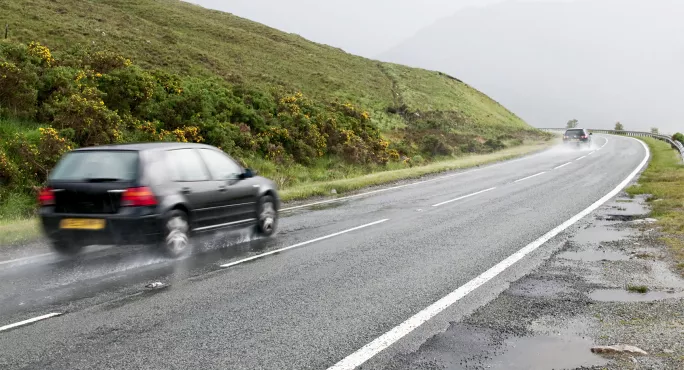The carbon footprint of a GCSE exam

Students around the country care deeply - and rightly - about climate change and sustainability. After all, their futures are at stake.
It is incumbent on us all to do our bit, where we can, to lessen our collective impact on the environment and build a safer future.
That’s why Ofqual commissioned an initial piece of research to examine the carbon footprint of England’s examination system.
Pen-and-paper exams
Today we are publishing the findings of that research, estimating for the first time what the carbon footprint is of an English GCSE, taken in the traditional way, with pen and paper, sat in an exam hall.
While that question is unlikely to be at the forefront of any student’s mind when they turn over the front page of their exam paper to see which of the creative writing prompts they feel inspired by, it is nonetheless an important one if we want to explore ways of reducing the environmental impact of the exams system in future.
The answer is that a single student sitting the two papers of an English language GCSE has a carbon footprint of 5.6kg CO₂e or carbon dioxide equivalent. That’s about the same as driving 1.82km in a three-door petrol car or running just over five hot-wash cycles at 60C.
Researchers from PA Consulting Group and Climate Partner looked in the round at the carbon footprint produced by a student sitting two English language papers for a GCSE, tracking carbon footprint from the moment they left home until they returned each time.
‘Cradle-to-grave analysis’
To ensure we had a comprehensive understanding of the impact, we asked researchers to conduct a so-called “cradle-to-grave analysis” that included an estimation of each step along the way, from the development of an exam to the final shredding and recycling of papers and scripts, including the marking and moderation, and awarding results.
Interestingly, they found that more than half the carbon footprint comes from students travelling to and from the exam hall and nearly one-third comes from the energy used, including lighting, during the exam.
The next biggest contributor is printing exam papers and scripts (10 per cent), while the remainder is down to exam paper administration - such as scanning and indexing scripts, marking and awarding, development and training of staff and pre- and post-exam transport and storage. These are the areas where there are opportunities to reduce carbon, which exam boards are already addressing.
Sharing good practice
Although Ofqual does not regulate the environmental impact of exam boards, researchers were asked to identify examples of good practice so they can be shared, with everyone working together to benefit the environment.
Examples found included changing procurement processes to embed carbon emissions reductions into supply chains and, in some cases, including emissions reduction targets into contracts with suppliers.
Digital exams
Of course, the big question on many people’s minds is the potential in the future for more exams to go onscreen and perhaps online. Increased digital delivery would change the character of carbon emissions - replacing paper-based emissions with those of electrical equipment manufacture and energy consumption.
With this research’s counterintuitive finding that the largest contributors to a traditional paper qualification’s carbon footprint relate to where the exam is taken, and how far students and staff travel to that centre, it is difficult to be certain whether switching to digital exams would reduce emissions. The carbon impact of computer systems is perhaps as well documented as that of paper manufacture and distribution.
Traditional and digital together
Like many others, I do not want to see the end of handwritten exams any time soon. But I would like to see hybrid exams, with traditional and digital components alongside each other, to allow students a combination of formats to show what they know, understand and can do. I say this because some children do better using pen and paper whereas others thrive with digital media. As research so often finds, the realities of a situation are rarely binary.
While today’s research was commissioned by Ofqual, the exam boards AQA, OCR, Pearson (Edexcel) and Eduqas, along with the Joint Council for Qualifications, the Department for Education and the Standards and Testing Agency, all contributed to it through workshops, interviews and data collections. Armed with the evidence of how big the carbon footprint of a GCSE is, my hope is that the exam boards will use this research to inform their own thinking, research and development in this space and build on their good practice.
There’s a long road ahead for us all on this, but that journey is under way.
Dr Jo Saxton is stepping down as Ofqual chief regulator of qualifications at the end of the month and will join Ucas as its new chief executive in January
You need a Tes subscription to read this article
Subscribe now to read this article and get other subscriber-only content:
- Unlimited access to all Tes magazine content
- Exclusive subscriber-only stories
- Award-winning email newsletters
Already a subscriber? Log in
You need a subscription to read this article
Subscribe now to read this article and get other subscriber-only content, including:
- Unlimited access to all Tes magazine content
- Exclusive subscriber-only stories
- Award-winning email newsletters
topics in this article



